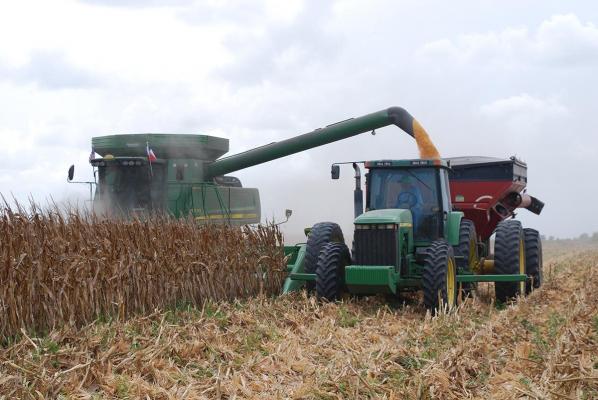Farmers Face High Yields, High Risks
By John Meng, News Editor Risk is an everyday part of life for farmers. The uncertainties inherent in weather, crop yields, prices, government policies, global markets, and other factors can cause wide swings in a farmer’s annual income. But there is one thing a farmer can always count on as an unyielding constant year after year – the cost of doing business will always go up. Over the past several decades, commodities such as corn and cotton have varied greatly in price.
According to Macrotrends, cotton prices were 0.27 per pound in September 1972 and surged to $2.13 per pound in late February 2011 (a 45-year high). However, as of Aug. 31, 2020, cotton prices settled at a modest 0.63 per pound.
Corn prices have not fared much better. Today’s price (Aug. 28, 2020) was $3.54 per bushel, less than the $3.79 price in January 1981 and significantly lower than the 60-year high price of $8 per bushel in August 2012.
Clay Whitley, Edna resident and United Ag cotton gin manager, commented that corn was a big producer, high yielder for many farmers this year and the cotton harvest has been above average as well.
“Cotton yields were above average, but I think the prices are bad,” said Whitley. “I think the farmers really have to have really high yields in order to make any money, and an average or above average doesn’t lend itself to making a lot of money. You have to have a really good crop, and I think this year is only a pretty good crop.It’s a slightly above average year on yields, and our quality has been outstanding on a majority of it. But the prices are probably not where they should be.”
Lacey Bayer, manager of United Ag in Edna and president of the Jackson County Chamber of Commerce and Agriculture, understands the economic struggles farmers face every season.
“I think for farmers, especially corn farmers, prices have been down just like they have been for quite a few years,” said Bayer. “The costs are up. The costs are up every year, and I think you’re going to have a lot of farmers have difficulty breaking even this year.”
“Fortunately,” she added, “a lot of farmers around here had really good yields which is going to help with their income this year so that’s a positive.”
Bayer recalled corn prices being particularly high within the last decade and that cotton prices have had some good years as well.
“But around here, farmers can fall victim to weather which is really hard on everybody because it’s unpredictable,” said Bayer. “It’s the nature of the beast. It’s all very unpredictable and you just have to do your very best to control the variables you can.
“Cost of equipment never seems to go down. It just makes things harder and you have to be better with your maintenance, treat your equipment better and just be as efficient as you possibly can.”
Chris Hajovsky, a farmer in northern Jackson County, explains that he tries hard to have cost-cutting measures that do not negatively impact yield.
“We do the best we can to give ourselves the best opportunity to make the best yield,” said Hajovsky. “For us, it’s about managing our risks. If we can manage all of our risks except for weather, then we’ve done everything we can do. Usually, if we can control all of our weeds and control everything that can hurt us on yield, then we give ourselves a good chance for a good crop and at least break even.
“We manage risk. That’s what’s it all about. We do everything we can to give a crop the best chance it can and let Mother Nature take care of us.”
Hajovsky commented that yields were good for him this year, but prices not so much.
“Dealing with the markets is probably the most stressful part about it,” he said. “There are always factors out of our control. We cut quite a few costs over the last few years trying to get our expenses down to be able to manage these low input areas. We manage it the best we can. We try to be diligent on how we spend money, and we try to maximize every acre. Every acre matters.”
Edwin Juranek, who farms corn and cotton on 1,150 acres south of Ganado, comments that the corn prices this year were “real cheap.”
“We’re not going to get hardly anything for our corn,” he said. “Prices on cotton are a little down too, but it seems like most farmers I talk to are making a pretty good cotton crop.”
Regarding the prices, Juranek explained that it is out of his hands because the commodity prices are established in the Midwest. If the farms in the Midwest have a bumper crop, then farmers in Jackson County will get a cheaper price. However, if the Midwest crops are weak or suffer from bad weather, local farmers will have a better price.
When asked how he manages the increasing cost of running his farming operation, Juranek said, “You just don’t buy anything until after you harvest your crop to see if you even have any money to buy anything,” said Juranek. “It’s hard to make ends meet on 1,150 acres. We just try to keep surviving.”

